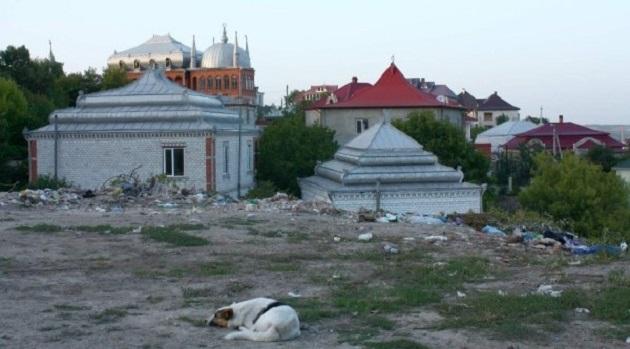Moldova: First Romani women elected to local government

UN Women reports that this summer’s local elections in Moldova resulted in the election of two Romani women for the first time. A total of 15 Romani candidates, seven of them women, ran in the June elections.
This is the first time Romani women have ever run for local office in Moldova. One of the victorious candidates, Varvara Duminica (age 54), has worked as a Romani community mediator in Chetrosu, a village north of the capital.
The other winning Romani candidate, Laura Bosnea (age 28), was elected local councillor in the town of Rascani, also north of Chisinau. Women in general face discrimination in economic and political life in Moldova.
Women are under-represented both as elected decision-makers and as voters. Until now, both women with disabilities and Romani women have been absolutely excluded from political representation.
Documentary about Romani "baron" from Moldova premiering at festivals
Zuzana Břehová, a Czech student of international development, has recently visited Soroca, Moldova’s Romani "capital". The local "Gypsy Hill" neighborhood there features unbelievably big houses built by local Romani residents and decorated with replicas of antique columns or cupolas reminiscent of the White House, and Břehová recently published a blog about her visit, which news server Romea.cz publishes here in full translation:
As part of our trip to Moldova we visited the town of Soroca, where a 2 000-strong Romani community lives in palatial residences that are unlike anything anywhere else. The "Gypsy Baron" Arthur also owns a big house there.
Soroca is a pleasant town located approximately 150 kilometers north of Chisinau on the right bank of the Dniester on the Ukrainian border. We went there in September as part of a college visit to development institutions in Moldova.
The trip involved 16 students and two instructors from the Development Studies Department at Palacký University in Olomouc, Czech Republic, and after our official visits were over, we were able to admire the beauty of Moldova, which has yet to be spoiled by massive tourism. One of the places we visited outside of the 700 000-strong capital of Chisinau was Soroca, home to Moldova’s biggest Romani community.
As one of Moldova’s oldest towns, Soroca is proud of its enormous medieval fortress in the center of the town above the meandering Dniester. The entire town radiates mystery and peace, as the river is unusually quiet there.
It wasn’t clear to me whether we were in a town, in the countryside, or somewhere in the wilderness. Everything blends together there.
In Soroca you get the feeling that something is being kept hidden from you. That is the case, as the town lives a bit of a double life.
One part of the town is its calm, completely ordinary section on the banks of the Dniester, and the other part is full of emotions and liveliness up on the hill. The more interesting section is the "Gypsy Hill" neighborhood.
We walked up to that neighborhood directly from the town center on a footpath, not the main road. As we did so we passed through the yards of completely ordinary houses, which was pleasing to the locals.
Not many tourists (and moreover a group of mostly blonde young girls) turn up on those side streets very often, which meant we were even more of an attraction. We were only deterred from chatting with the nice people along our way up the hill by a few local dogs, who barked threateningly and lunged at us on their chains.
As the surrounding tress began to become fewer and fewer, we slowly began to see the top of the enormous golden cupola of the local cathedral, which serves approximately 2 000 Romani residents. During our walk around these colossal palaces and villas, the words "city within a city", "life within a life", "another world", or "the beautifully absurd in a pragmatic reality" came to mind.
One rarely sees this kind of contrast anywhere. The atmosphere was amazing, and tourists reportedly travel to Soroca just to see these classy, extravagant Gypsy residences.
I had never seen anything like it before. The enormous buildings were decorated with antique columns, gilded access gates, and white domes that seemed to be lifted straight from the White House.
There were luxury cars parked everywhere and also many properties that have long been under development. Locals explained to us that when someone builds a big house, their neighbor builds an even bigger one.
It did not take long for us to become the center of attention. A local grandma wanted to read my palm for about CZK 12.
She said that a tall, dark-eyed stranger would appear in my life, but I wasn’t brave enough to continue with her analysis. She was nice, though.
Ten-year-old boys ran up and offered to give us tours of the neighborhood. They might have expected payment, or maybe not, but the first place they all wanted to take us was the home of the Baron himself, which we had just passed by.
We were a bit afraid of that, so we continued under our own steam. The place itself was so charming that I later looked up what I could about it online and ascertained that this year a documentary film about the neighborhood called "The Gypsy Baron" will have its world premiere at several festivals.
The film tells the story of the life of the "Gypsy Baron", Arthur, in Soroca and his 12-year-old successor, Vale. Today I regret not attempting to visit the Baron, but as they say, "hindsight is 20/20" – I may yet return someday.
VIDEO